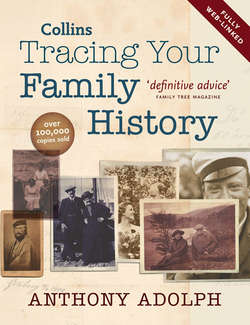Читать книгу Collins Tracing Your Family History - Ryan Tubridy, Anthony Adolph - Страница 117
COMPILING CENSUSES
ОглавлениеTo compile censuses, the General Registration sub-districts were divided into enumeration districts, which were basically the areas that a single enumerator could cover in foot on an evening. Just as now, forms were distributed in advance of census night, to be completed by each household on the appointed evening or, if everyone in the household was illiterate, by the enumerator. The enumerators copied the resulting information into enumeration books and sent them to the Registrar General for statistical analysis. This was done by clerks with blue pencils, ticking or crossing off entries as they were counted, something which newcomers to census returns sometimes find confusing. Equally, the clerks sometimes wrote general descriptions against occupations – but once you know this, the clerks’ notes are easy to spot and ignore.
The original householders’ forms were destroyed but, more by luck than judgement, almost all the books were kept, but scarcely very well – the returns for 1841 and 1861 were found in the roof of the Houses of Parliament, and sections of the former, particularly for parts of Kent, Essex and London (Paddington, Kensington, Golden Lane and Whitecross), have never been located. They were transferred to the Public Record Office by 1912 and it was not until much later that their immense value for family history was realised. The microfilmed copies of the books are what we use now for census searching and formed the basis for the increasing number of census indexes.
Detail from The Census at Bethlehem by Brueghel (1525–69).
